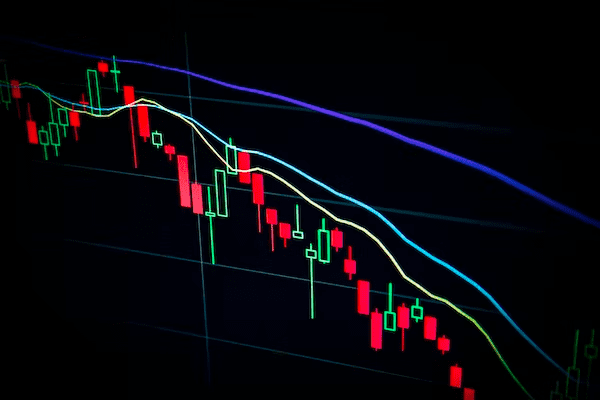Did you know that the crypto market is currently worth around $884 billion? Of course, this figure changes on a daily basis, but it gives you an understanding of the sheer scope of this industry.
More and more people are investing in cryptocurrency. Because of this, you need to give yourself a competitive edge to ensure your investments are as successful as possible. One of the ways you can do this is with data discovery. Read on to find out everything you need to know.
What is the definition of data discovery
Before we look into the benefits, it’s only right that we begin with a discovery data definition to help you get a better understanding.
Data discovery involves identifying all data stored in your business and then centralizing it so that it’s much easier to work with.
Advanced analytics is used to find patterns that you wouldn’t be able to see otherwise.
Often, businesses attempt to assess individual data sets. However, as we accumulate more and more data, this is not practical. In fact, it’s often impossible.
With data discovery, you are able to look at the bigger picture. You can collate data from a variety of sources, both external and internal, to locate outliers and patterns. As a consequence, you may better understand the data by visualizing it in a clear and easy manner.
How data discovery is improving the crypto market
Now that you have a better understanding of data discovery and how it works, let’s take a look at the benefits this is bringing to the crypto market:
Amplifying cryptocurrency startups
Earlier, there were hurdles that entrepreneurs had to overcome while creating crypto startup businesses due to a lack of funding and proper analysis of the current market trends. However, data discovery creates a more secure framework, which enables investors to make more intelligent choices. With data discovery, you can assess vast amounts of data, so you can determine the most suitable and profitable market landscape for startups, ensuring they make better decisions.
Marking the volatile patterns
Understanding the patterns and trends in the crypto market is what creates a successful crypto trader. The trade value of cryptocurrency determines the investment. To make sure you don’t lose, you must understand existing market patterns and act accordingly. AI and big data tools enable you to accumulate data via media platforms and assess people’s behavior and current patterns. Traders are better able to understand volatile patterns, so they can make constructive decisions.
Lower frauds and boost security
By recognizing different patterns in the blockchain through in-depth analysis, big data analytics provides you with a guided framework so that all crypto trading can be monitored. This helps to prevent fraud and hacking. A number of traders and entrepreneurs have been skeptical about investing in cryptocurrency because they’re worried about scams. Although, with continual monitoring and data analysis, it’s much easier to locate fake crypto traders and scammers.
Ultimately, data discovery enables you to make more intelligent decisions, which can benefit you in multiple areas when it comes to cryptocurrency.
Implementing data discovery effectively
There are a number of different steps you can take to implement data discovery effectively. This includes the following:
- Determine your objectives. For most businesses and individuals, they’ll have data spread across various departments and systems. This can make it difficult to locate and evaluate the data you require. To make the process quicker and easier, you must pinpoint your objectives. Maybe you want to implement data discovery so that you can find new trends and make more intelligent trading decisions. Perhaps, your data discovery journey is all about compliance.
- Implement data crunching. To ensure that data discovery is as effective as possible, you need to use a variety of sources when gathering and assessing data. Even if, after you’ve defined your objectives, you believe you only need to look at one IT system, you should still go further. This is what we call data crunching. This process is imperative because it ensures that you achieve objectivity, and you’re able to view the complete picture.
- Prepare your data. Once you have collated all the data you need, it has to be prepped for analysis. This process includes removing anything that is repetitive or redundant and doesn’t assist you. You’ll also need to classify the data at this point.
- Evaluate the data. After you’ve prepped all the data you’ve gathered, you or your team will need to view it and evaluate it. At this point, a lot of people decide to run a DPIA to ensure legal compliance and mitigate potential risks.
- Record your findings. Once you’ve finished assessing your data, you should record the findings you’ve made. The way you do this will depend on the data you’ve been assessing and your ultimate goals. In some situations, data visualization dashboards are sufficient. In other cases, though, you may feel it’s better to put together a more thorough and extensive report that details the findings you’ve made.
- Repeat the process. Finally, it’s imperative to recognize that data discovery is not a one-time thing. You need to repeat the process, again and again, to make sure you’re always learning. After all, the crypto market is never stagnant, so if you remain still, you’re only going to get left behind.
Data discovery mistakes and barriers in crypto
There are a number of pitfalls you need to be mindful of during the data discovery process.
Poor data quality
Poor data quality can hinder your ability to deliver true value. To ensure you don’t suffer from this problem, plan your search and segmentation fields ahead of time to make sure the search criteria provide the value you expect.
Paralysis by analysis
During the process, analysts may become overwhelmed by the sheer amount of data they have collected. Too much time can be spent centralizing it, cleaning it, and gathering it, and then they don’t know what to do with it from this point. On its own, data is simply raw information. While you need to prepare and manage it, you shouldn’t obsess over it. You need to focus on taking the data you’ve gathered and then transforming it into knowledge. This is the only way it’s going to help you to move forward.
A lack of goal setting
Earlier, we explained that you need to set objectives when embarking on the data discovery process. If you don’t consider the decisions that need further influence early in the process, you’ll end up with outcomes that don’t have significant value to your business. This means you’re wasting your time and money on data that’s not relevant.
Leverage the benefits of data discovery in the crypto market
As you can see, there are many benefits to be gained by leveraging data discovery in the crypto market. The crypto market is getting more competitive, so it’s critical to give yourself any advantage you can. Understanding data discovery and knowing how to leverage it could be just the advantage you’re looking for.
FAQ about data discovery in the crypto market
Let’s end by answering some of the most commonly asked questions people have about data discovery in the crypto market:
Data discovery software is a tool that makes it easy for you to gather and bring together data from a variety of sources, so you can identify trends and patterns. Critical functions of this software include advanced statistical analysis, visual analysis, data modeling, and data preparation.
There are a number of different sources you can use to gather crypto data. For real-time information, CoinMarketCap has become a popular choice. Here you can find accurate market analysis reports, including trading volumes, market cap, and price charts. You can also research blogs and other websites yourself.
There are a lot of pitfalls and challenges people experience during the data discovery process. For example, incoherent business-wide data management governance and standards, the lack of a single source of truth, and missing co-relation and data fusion features across tools or platforms.
Can you predict the crypto market?
It is not possible to predict the future. We cannot say with 100% certainty what’s going to happen in crypto in years to come. However, we can use research and data discovery to give yourselves the knowledge to make more accurate forecasts.


